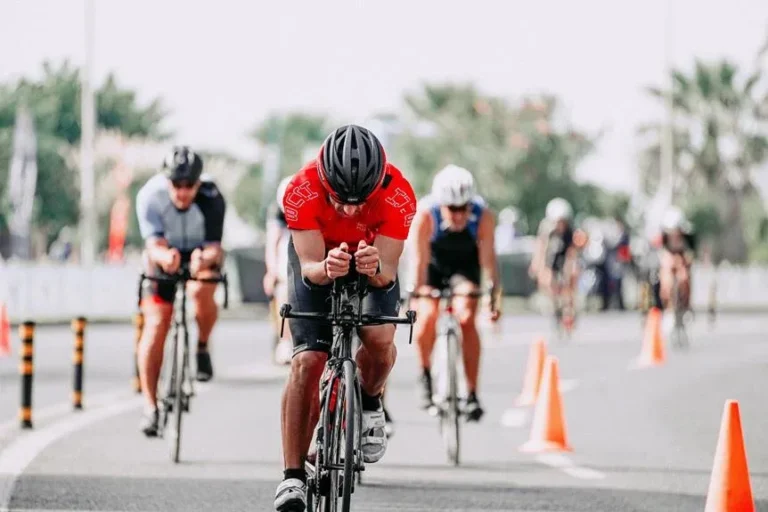As you consider the intricacies of men’s versus women’s triathlon bikes, the subtle yet crucial differences in frame geometry, components, and fit can significantly impact your performance on the course.
Understanding how these elements cater to specific anatomical needs can enhance your comfort and efficiency during training and races.
But what exactly sets these bikes apart, and how do these distinctions translate into real-world advantages? Stay tuned to uncover the nuanced details that can make a world of difference in your triathlon experience.
Key Takeaways
- Women’s triathlon bikes feature shorter stack heights and reach lengths for better fit and comfort.
- Women-specific saddles cater to wider sit bones, enhancing race-day comfort and performance.
- Narrower handlebars on women’s bikes provide improved control and handling during triathlons.
- Frame geometry and component variations significantly impact biomechanics and overall race performance.
Anatomical Differences in Frame Geometry
Have you ever wondered how anatomical differences influence the frame geometry of men’s and women’s triathlon bikes? When it comes to women’s bikes, manufacturers often consider the average female rider’s proportions by incorporating shorter stack heights and reach lengths. This adjustment aims to optimize comfort and performance for women cyclists. Additionally, step-through frames, a common feature in women’s bikes, provide easier mounting and dismounting options, enhancing convenience, especially during transitions in a triathlon.
Modern women’s bike designs may also include curved elements not only for aesthetic purposes but also for an improved fit. Narrower handlebars on women’s triathlon bikes are designed to match the shoulder width of female riders, ensuring a more comfortable riding experience. These differences in frame geometry between men’s and women’s triathlon bikes are carefully crafted to cater to the anatomical variations between genders, ultimately seeking to provide the best possible riding experience for all athletes.
Component Variations for Performance
An important aspect to consider in optimizing the performance of women’s triathlon bikes is the deliberate variations in components tailored specifically to enhance riders’ comfort and control.
Women’s triathlon bikes often feature women-specific saddles designed for enhanced comfort and support during long rides.
The handlebars on these bikes may have narrower widths to accommodate the typically narrower shoulder width of women, promoting a more natural and comfortable riding position.
Additionally, components like brake levers are adjusted on women’s triathlon bikes to better fit smaller hands, ensuring improved control and comfort while riding.
These adjustments, such as a shorter reach, help female riders maintain better handling and stability on their bikes.
Size and Fit Considerations
Women’s triathlon bikes are meticulously designed with specific size and fit considerations to optimize performance and comfort for female riders. These bikes often feature shorter stack heights and reach lengths, catering to women’s typically shorter torsos.
Women-specific saddles accommodate wider sit bones, enhancing comfort during long rides. Step-through frames, commonly found in women’s bike models, offer easier mounting and dismounting, crucial during triathlons.
The narrower handlebars on women’s triathlon bikes are tailored to suit the shoulder width of female riders, improving handling and overall control. Additionally, shorter crank arms on these bikes are ideal for riders with shorter legs, ensuring efficient pedaling mechanics.
These size and fit adjustments in women’s triathlon bikes aim to provide a more ergonomic and performance-driven riding experience, addressing the anatomical differences such as shorter torsos and narrower shoulders that are common among female athletes.
Biomechanical Efficiency Factors
For optimal performance and reduced fatigue during long races, biomechanical efficiency is a critical factor to consider in triathlon bikes. When looking at biomechanical efficiency in triathlon bikes, several key factors come into play:
- Anatomical Differences: Women-specific saddle designs on triathlon bikes are tailored to accommodate anatomical variations between men and women. This customization enhances comfort and overall performance by reducing pressure points and ensuring proper support.
- Power Output Optimization: Customizable components such as crank arm lengths and handlebar widths allow for a more personalized fit, enhancing power transfer and efficiency. By fine-tuning these components to suit your individual biomechanics, you can optimize power output and pedal stroke effectiveness.
- Saddle Designs: Saddle designs play a crucial role in biomechanical efficiency. Women-specific designs consider pelvic structure and soft tissue pressure points, ensuring a more comfortable and efficient riding experience. Choosing the right saddle can significantly impact your biomechanics, reducing fatigue and enhancing performance on race day.
Impact on Race Day Performance
The impact of differences in triathlon bike designs between men and women on race day performance is significant and can influence overall results.
Women’s triathlon bikes, with features like shorter top tubes and higher stack heights, offer a more upright riding position compared to men’s bikes, which prioritize aero positioning with longer reach lengths and lower stack heights.
Women-specific saddles cater to wider sit bones for enhanced comfort during longer races, while narrower handlebars on women’s bikes accommodate shoulder width and provide better control.
These differences in frame geometry and component choices impact not only comfort but also performance on race day. Choosing the right bike, whether it be a women’s-specific model or a men’s bike adapted to fit, can make a substantial difference in your triathlon race.
Visit a local bike shop to find the best fit for your body type and riding style, ensuring that your equipment supports your performance on race day.
Conclusion
In conclusion, understanding the differences between men’s and women’s triathlon bikes is essential for finding the right fit and optimizing performance.
From anatomical variations in frame geometry to component adjustments tailored to specific needs, these factors play a crucial role in biomechanical efficiency and overall race day performance.
By prioritizing proper size and fit considerations, triathletes can ensure a comfortable and efficient ride that enhances their performance in every race.
